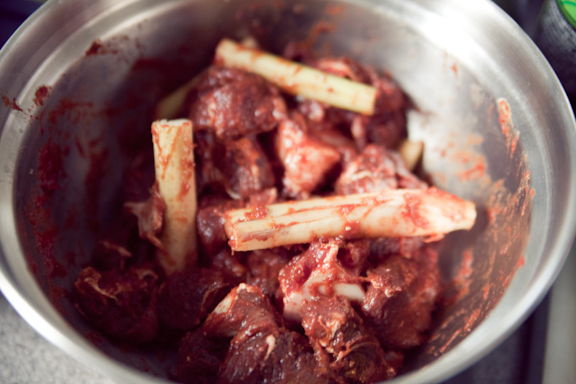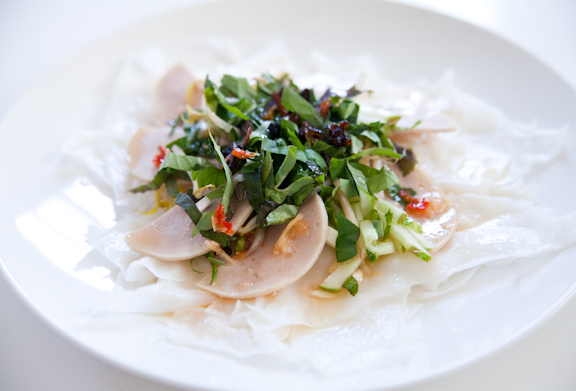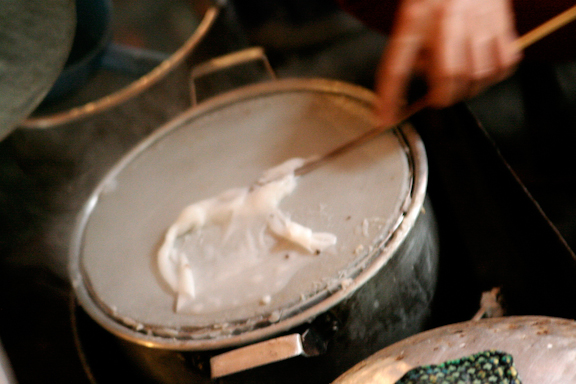Fall is well under way here on the Hill. That means lovely cool days, gorgeous colors, scarves, boots, hot apple cider… Indeed, after growing up in Canada, then spending high school and college in the desertlands of Arizona, one of the major things I celebrate about being in the Northeast is having distinct seasons. I love all of them! There is something about seasonal change that my body and soul cannot live without — the cyclical nature of time and growth, the end of one thing and the beginning of another.
Among the many things that fall marks is harvest time and the change in the foods available to us and what we eat. Hot stews make some of the greatest meals now, and this one is a favorite in our household. You might say fall came early over here, as both my husband and his dad love slow-cooked meats and stews, so when my father-in-law came for a visit in August, this was an obvious dish to put on the menu.
Bo kho is actually my husband’s favorite Vietnamese dish. It’s his regular order at any Vietnamese restaurant that serves something other than pho. And what he loves even more than slow-cooked meats is soft, gelatinous beef tendon. So when we make bo kho at home, we make sure to include plenty of that.
Bo kho is another one of those French-influenced Vietnamese dishes. It’s essentially a French ragout with Asian spices. In Vietnam, it’s actually eaten for breakfast and often with a baguette for sopping up the sauce. At Vietnamese restaurants in North America, you will often have the option of eating bo kho with baguette, rice noodles, or egg noodles, all of which make for a hearty, comforting meal. It’s served with Thai basil, a squeeze of lime, and a dipping sauce of salt, pepper, and lime.
Bo Kho
Makes 6 servings
This can be made in either a slow cooker or a Dutch oven. Beef tendon is very tough and requires cooking separately for several hours to become tender. We like our tendon super soft and gelatinous rather than chewy, so we simmer it for a good number of hours, until it can be easily sliced through, before adding it to the stew to simmer even longer and to soak up some flavor.
1.5 lbs beef tendon
1 tsp baking soda
1.5 lbs beef chuck or shank
Marinade:
1 tsp salt
1 tsp sugar
1 Tbsp fish sauce
1 6-oz can tomato paste
2 bay leaves
2 star anise
3 cloves
3 stalks lemongrass, cut into 4-inch pieces and bruised
1 tsp curry powder
1 tsp 5-spice powder
2 Tbsp vegetable or canola oil
2 cloves garlic, crushed
beef broth or water
3 medium carrots, cut into thick slices
Accompaniments:
baguette, rice noodles, or egg noodles
Thai basil
lime wedges
salt, pepper, and lime dipping sauce
1. Boil a pot of water with the beef tendon and 1 tsp of baking soda. Simmer for 3 hours or until tendon becomes tender enough for a knife to cut through it with some ease. You may want to simmer this in a slow cooker overnight, so that the tendon is ready to cook in the stew the next day. When tendon is tender, drain and rinse. Cut the tendon in half lengthwise and then into pieces about 2 inches long.
2. Wash and pat dry the beef chuck or shank. Cut into 1.5-inch cubes. Mix in the marinade ingredients. Let marinate for 30 minutes and up to overnight.
3. Heat the oil on medium-high, and then add the crushed cloves of garlic. When the garlic begins to brown, add the marinated beef chuck/shank, along with all the marinade ingredients, and let it brown. You may want to do this in several batches to avoid overcrowding the pot, so that the meat sears rather than steams. Put all the meat, plus the cooked tendon, back into the pot. Then add enough beef broth or water to cover everything by an inch or so.
4. Let the stew simmer on low for about 3 hours. (You can also transfer the stew to a slow cooker at this point and cook on low overnight.) Add carrots to cook during the last half hour.
5. Serve the stew in shallow dishes with baguette, or serve over rice or egg noodles. Include Thai basil, lime wedges for squeezing over, and salt, pepper, and lime dipping sauce for the meat.


















Connect with us